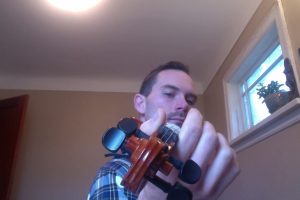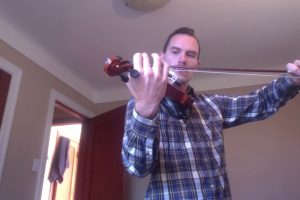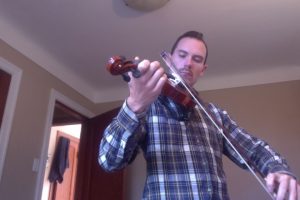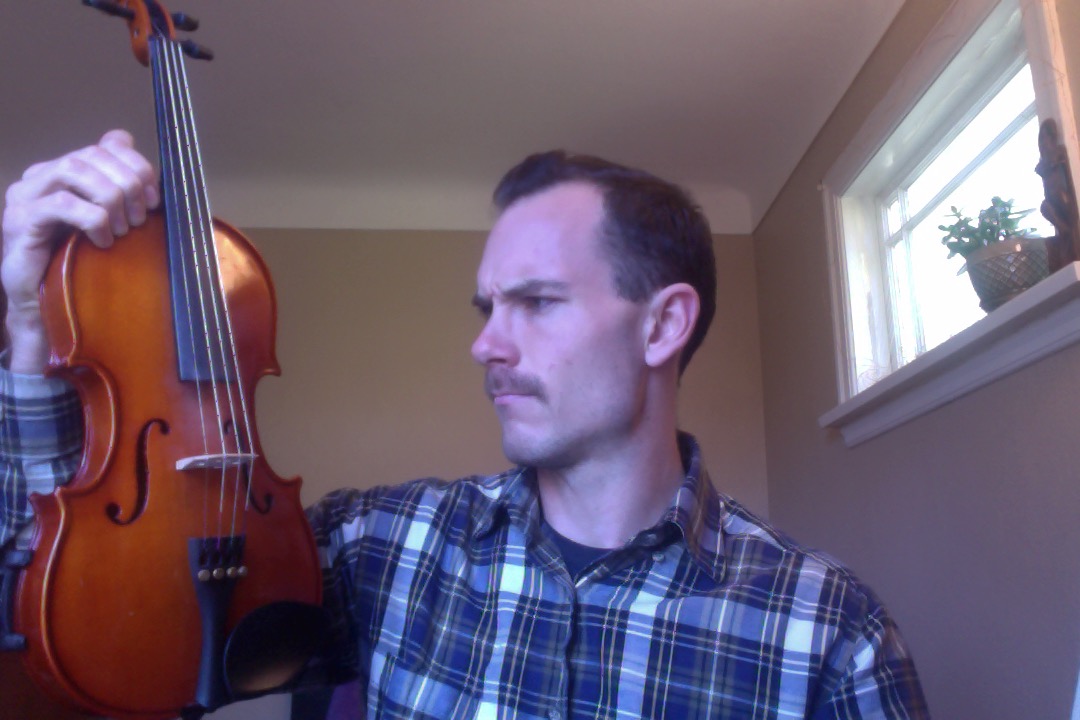Chapter 7- Intro to the left hand
While moving along through my instruction book (http://violin-works.com), a key point I’ve learned is how to hold my left hand on the neck of the violin; straight from the elbow to the hand, and relaxed, with points of contact on the thumb and the base knuckle of the index finger.

I also read that fret markers are not recommended because the violin is primarily an auditory instrument, where the player should not rely on their vision but their ear to determine if they are playing the right note. I agree with this point and think that it will be better for learning music as a whole if I have to sound things out, so I peeled off my fret marker. Singing the note I am trying to play will help my music sense anyway, rather than taking a more mechanical approach. This chapter also introduced me to tones and semi-tones, as well as intervals, sharps, and flats, but are covered more extensively in chapter 8 and 9.
In Chapter 8 I learned how to swing the left elbow forward and backward under the neck in order to help fingers reach the
G 
and E  strings.
strings.
I also learned that the 3rd finger notes on each string are all an interval of an octave above the neighboring lower string. Understanding this relationship gives context to how the notes are laid out along the neck. The beginning of ‘Somewhere over the rainbow’ is a good example of playing the same note in a different octave. Watch and listen!
In chapter 9, Stephen further explains tones, semi-tones and minor thirds (Something I still don’t quite understand). I can see now how to read music and interpret where my fingers go on each string. For example, if I were to play an open D string, putting my first finger down on the string would give me an E note. Therefore, if I read an E (on the bottom line of the staff), then I know I’ll need to put my first finger down in the D string. When using my fingers to stop the string on the neck, I am to make sure that I stay relaxed and use only as much pressure as necessary. It is also important to keep all of my fingers just above the string when not in use, and when stopping a string, use the pad of the tip of my finger for accuracy.
Explaining the theory as I learn it gives you a good idea of my progression in a sense, but it doesn’t really tell you about my playing. Therefore I intend to take a little video or sound clip for each new post to track my playing, skill progression and sound. Sometimes I may just play an exercise, and other times I will play songs, but for each, I will explain what I’ve accomplished, and what I may still be struggling with. As of now, keeping my hands relaxed that is a struggle, as they tend to clench up, stiffening my grip on the bow causing it to bounce across the strings. I am going to focus on staying relaxed and slowing things down.
The next chapters involve many new exercises using the fingers of the left hand in the high position and low position (whatever that means). I’m looking forward to learning about what is to come! Until next time!

Leave a Reply